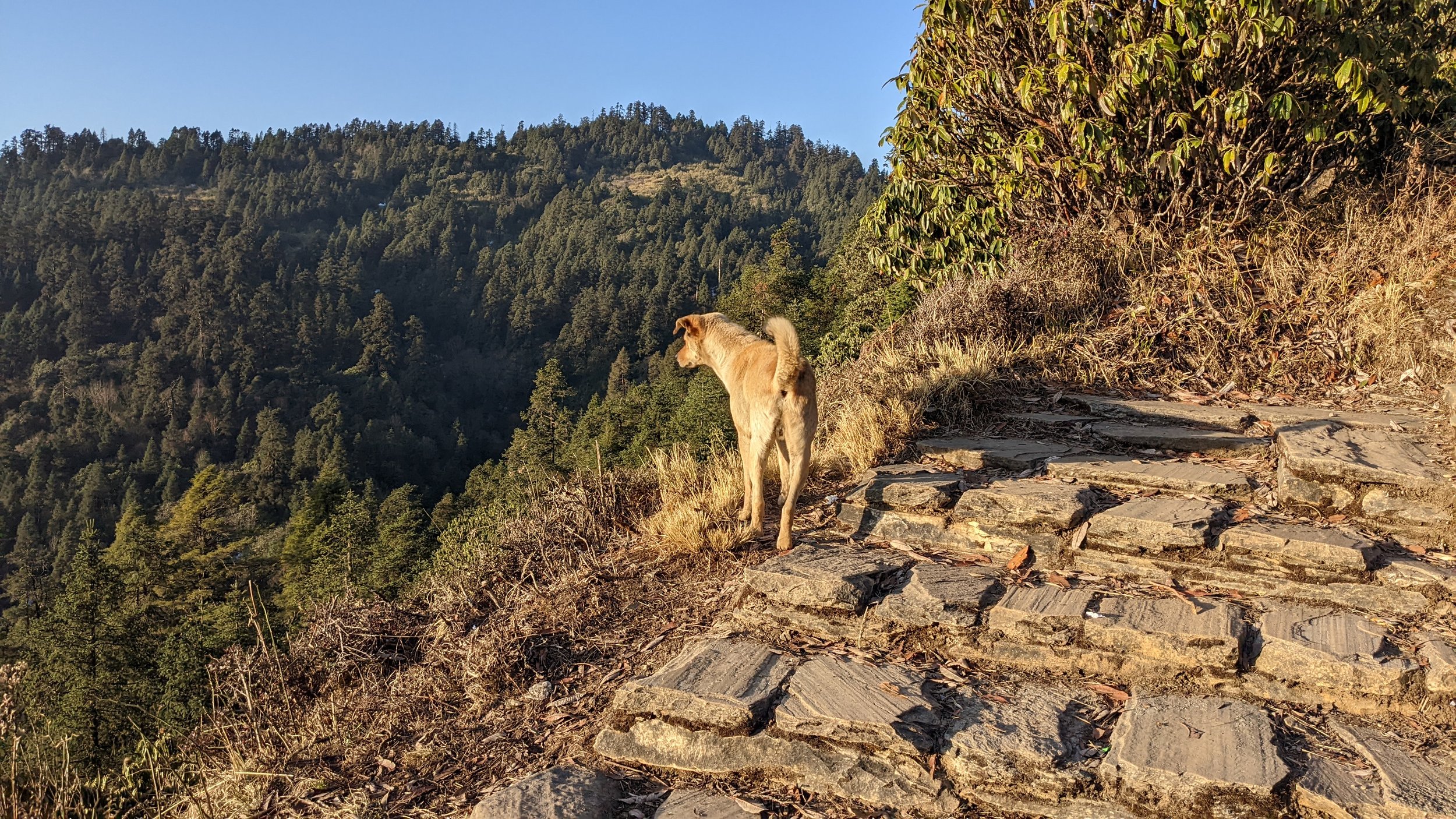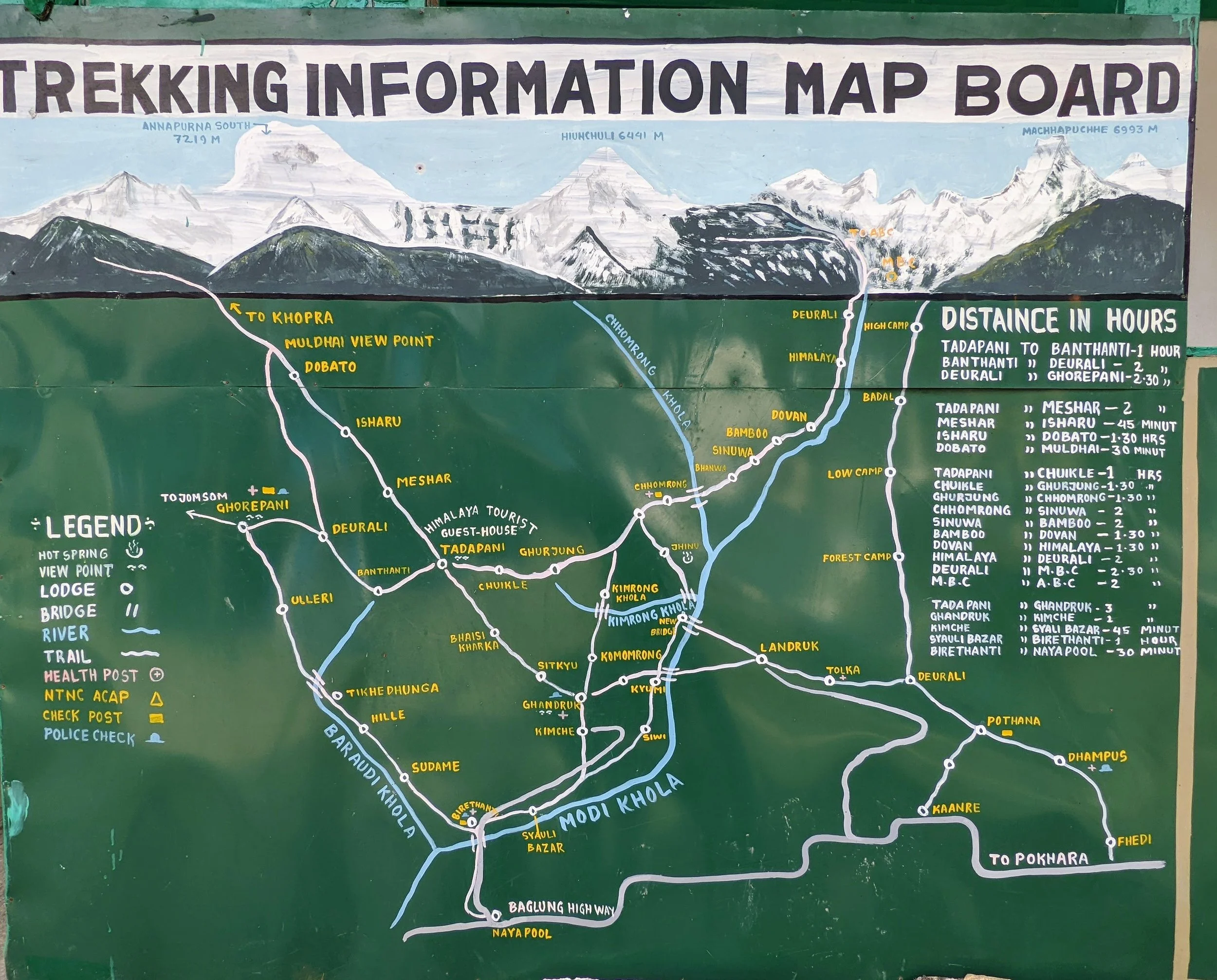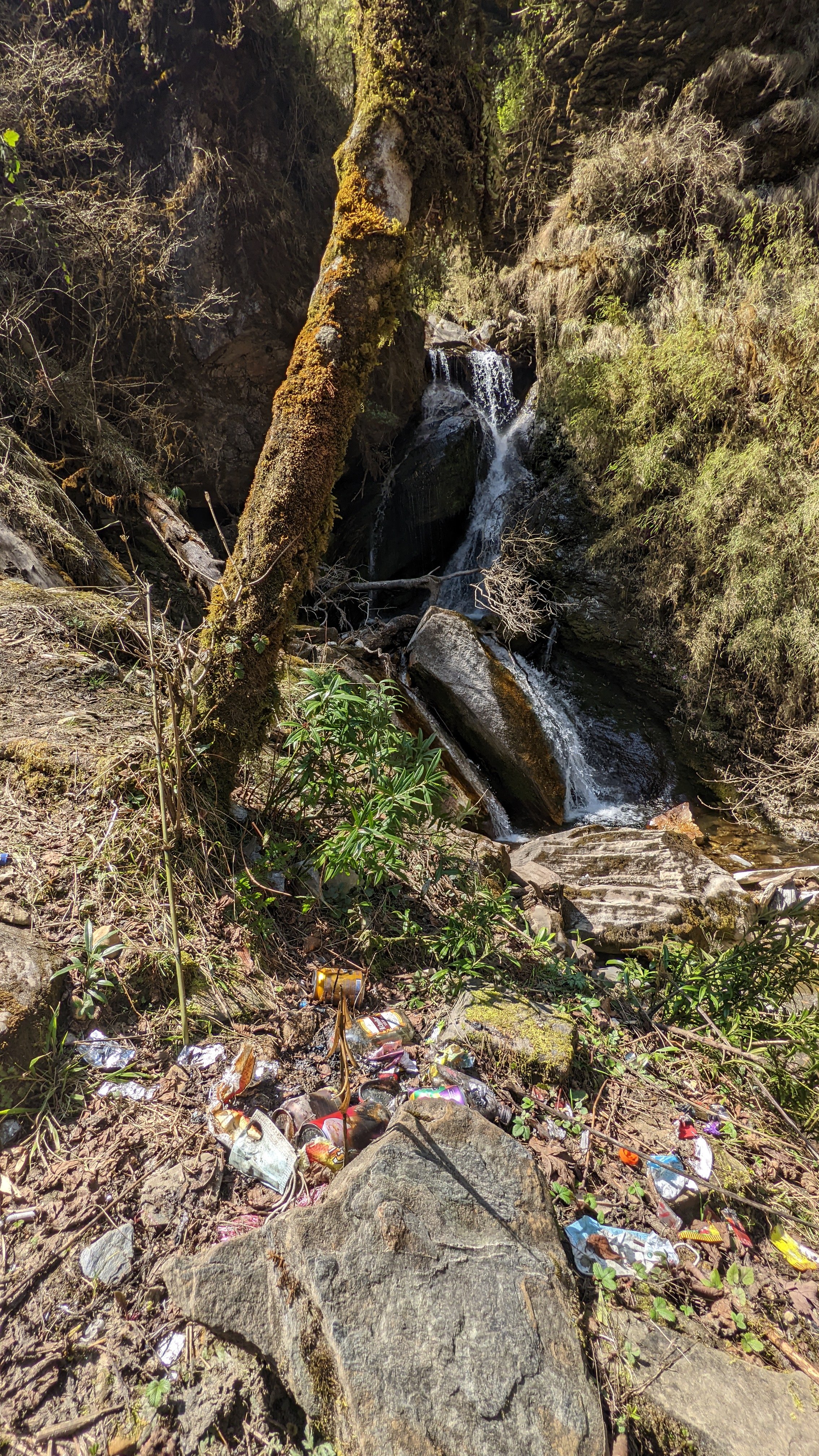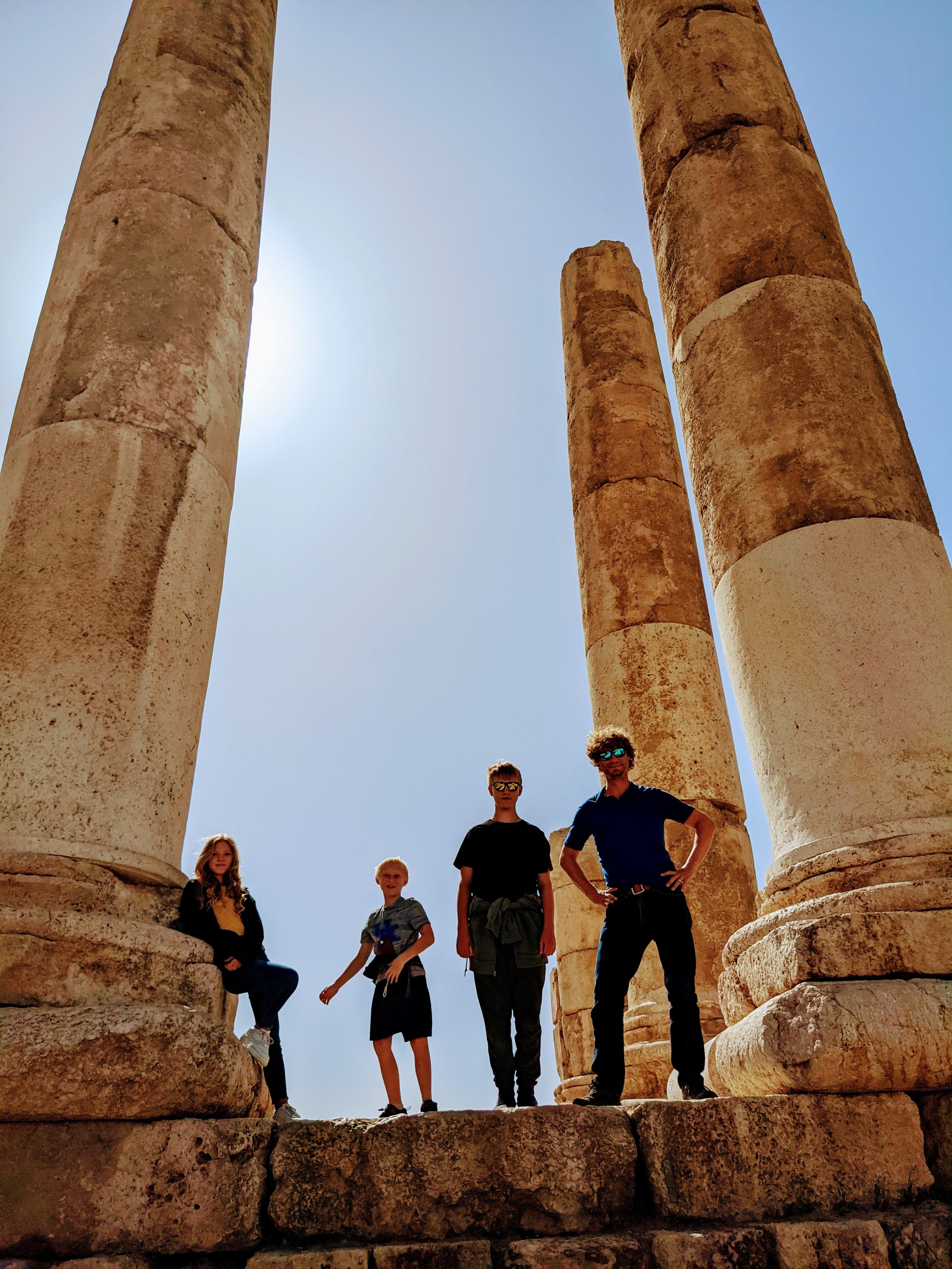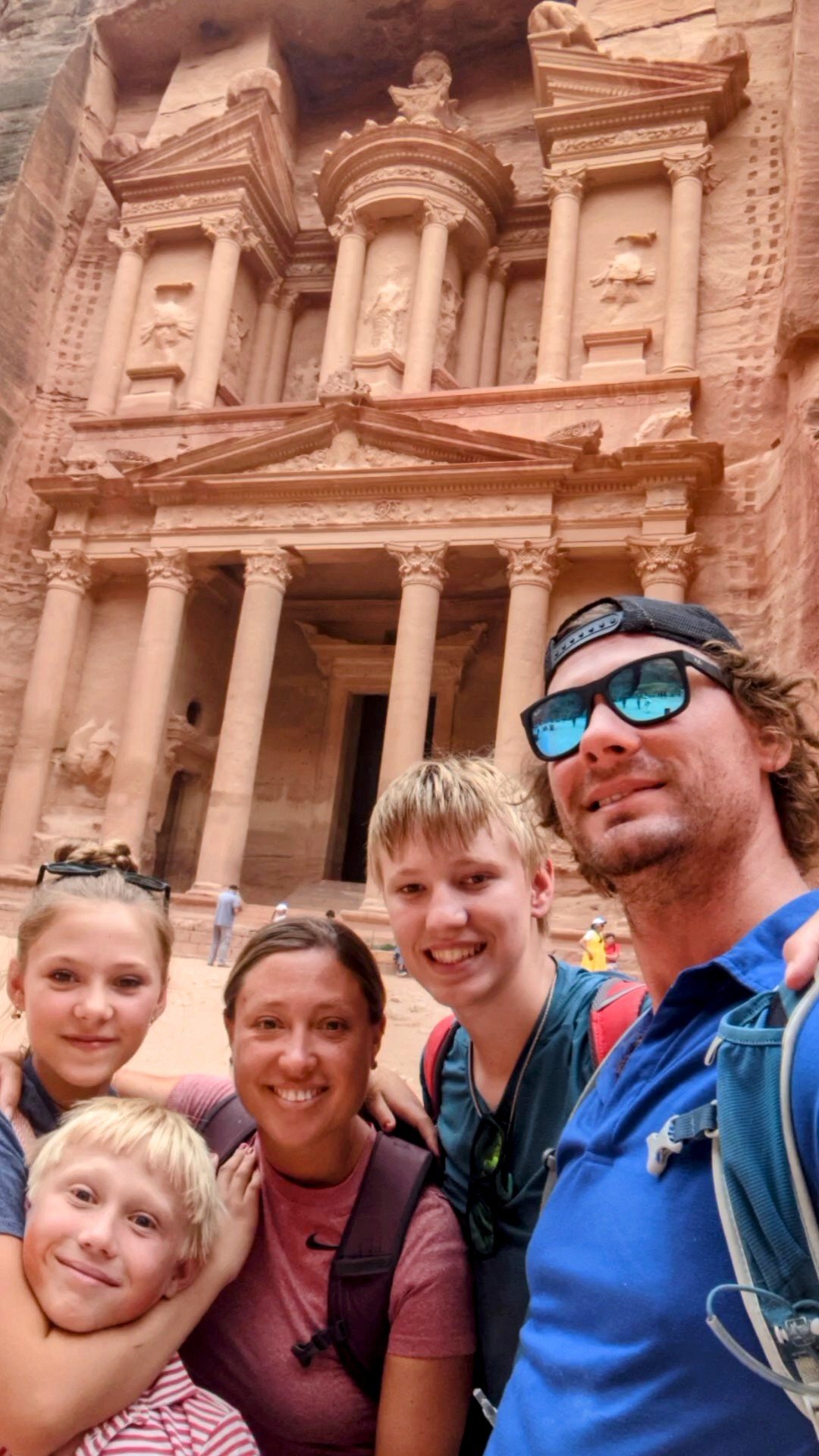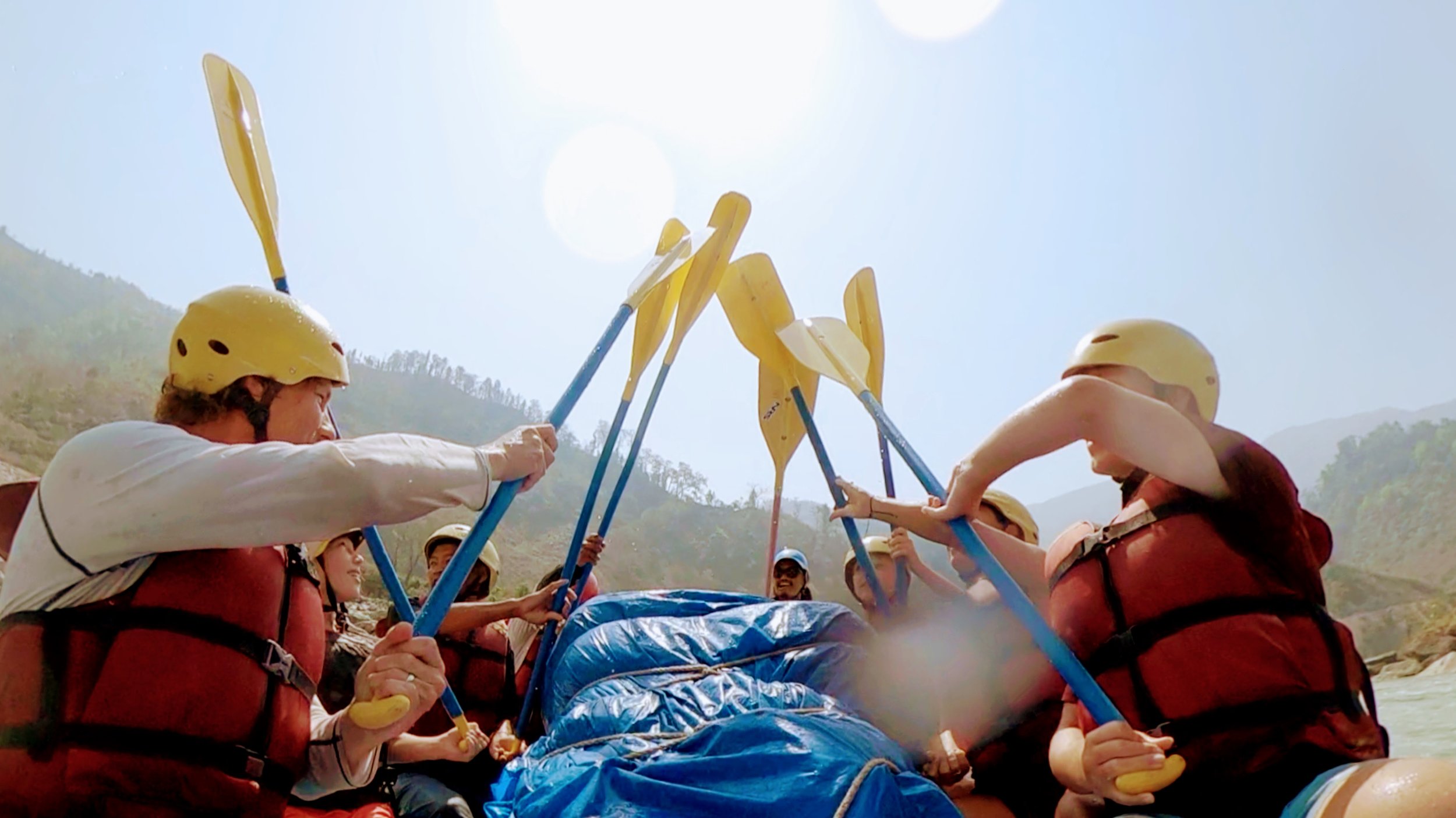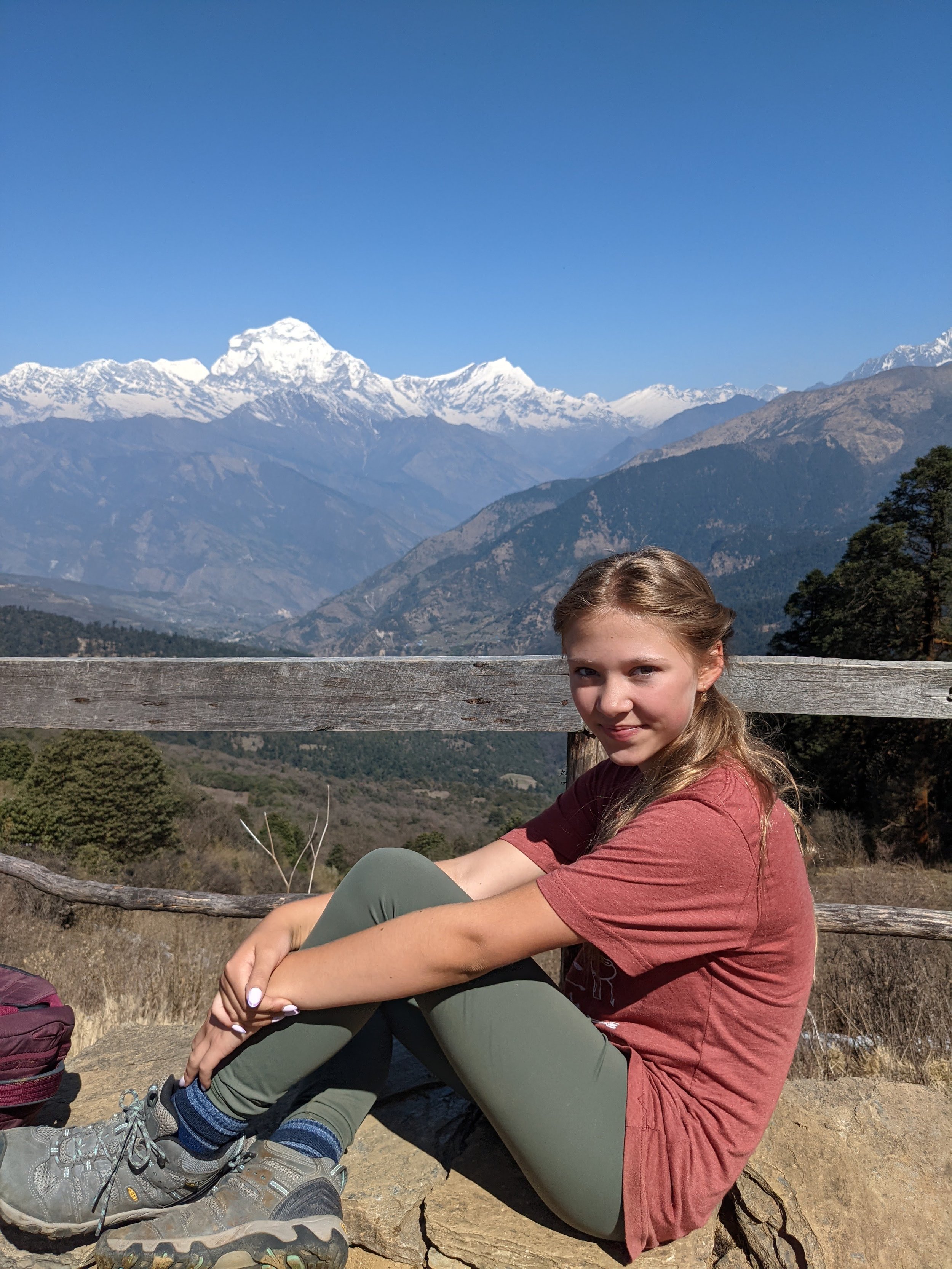The Annapurna Poon Hill Trek in Nepal
View of the Dhaulagiri and Annapurna Mountain Ranges at Sunrise from Poon Hill
Expectations When Trekking in Nepal
Trekking in Nepal is a heavily romanticized experience that conjures up images of Sherpas carrying heavy loads, Everest base camp, tales of the Yeti, and snow capped mountain peaks. When we were planning our trip around the world, Nepal emerged as an early destination for this reason. Trekking in the Himalayan mountains is one of those pinnacle experiences that is made all the more appealing due to how difficult it is to pull it off. Two weeks is barely enough for a trip to Nepal, as it takes upwards of 30 hours to get here from Kentucky. It is basically on the other side of the world and, during normal times, you are looking at 3-4 flights from Lexington. Once you get here, the time difference is about 11 hours, meaning you will need to completely flip your schedule. Given all of these things, we recognized that our chance of planning a trip to Nepal in the next 10 years outside of our trip around the world was slim to none and we were determined to add it to our itinerary. When I started researching where to stay, how to get here, and what to do in Nepal, I quickly realized that planning a trip here would require 100+ hours of research and dozens of international phone calls. Since I was in the midst of planning a six month trip around the world, I didn’t have the time necessary to invest in planning the Nepal portion of the trip. Additionally, this isn’t a place I was comfortable “winging it” with the kids. I wanted guides and clean hotel rooms and the knowledge that we would at least have a safe place to stay every night. For these reasons, I used a travel agency for the first time in my life. After reading a very convincing blog post on traveling to Nepal with kids, I went with an agency based in the UK, Stubborn Mule Travel. I wanted to deal with someone that I knew I could communicate with easily and I don’t regret this decision. Although it was undoubtedly more expensive to do it this way, the peace of mind was worth it for our first trip here. If we return to Nepal, however, I will use the local Nepalese agency, Royal Mountain Travel, to coordinate the trip directly. Now that I have a relationship with them and know they speak great English, I will be comfortable skipping the Western middle man.
Wendi and Wilson Enjoying a View of the Annapurna Mountain Range from an Overlook on Gurung Hill
Why go trekking in Nepal?
Believe me, I have asked myself that question more than once in the last 72 hours. When I lay completely and utterly physically exhausted, but unable to sleep due to the altitude and 5,000,000 stray dogs barking in Ghandruk at 2:00 AM, I asked myself this question. As I sent my 9 year old into another outdoor pit toilet to defecate into a hole in the ground because he contracted a GI illness on our last day in Bangkok, I asked myself this question. As we gingerly made our way through a jumpy herd of water buffalo on a narrow path on the side of a mountain, I asked myself this question. So, I’ve thought about it and here is why.
Gus on the Struggle Bus after the Tough Ascent from Tikhedhunga to Ulleri, 400 meters of Elevation Change Straight Up Endless Stairs
1. It is breathtakingly beautiful.
We haven’t laid eyes on Everest and probably won’t during our stay in Nepal, but the Himalayan Mountains are truly stunning, stop-you-in-your-tracks stunning. The foothills of the mountains are just as awe-inspiring. The hills are essentially covered in Rhododendrons, and not the small bush variety we have back in Kentucky, but huge, gnarly, moss-covered towering tree Rhododendrons. Their blooms are red and bright pink and unable to be captured in a photo.
Massive Rhododendron Trees in Full Bloom Throughout the Trek
A Striking Bloom Hitching a Ride on Wendi’s Backpack
The villages that dot the sides of the mountains, family gardens, hundred year old paths that connect them, and bright Tibetan prayer flags that hang along the way somehow expound on the natural beauty, rather than diminishing it. There are rushing mountain streams and so many waterfalls that I stopped taking pictures of them. Jasmine fills the understory of the old growth forests that remain and fills the air with the most delicious scent.
The Blossom of Jasmine Which Filled the Forest with Floral Aromas
2. The people are so nice and welcoming. It isn’t easy to get to know a new culture in the short time of a week. It often takes an extended stay of months to really get a feel for a new place. Nepal is unique in that the people are so quick to let you into their world, that you can get a glimpse into their lives and culture in a short period of time. Trekking, in particular, allows a glimpse into the lives of the mountain people who walk hundreds of stairs just to get basic goods.
Our Full Crew: Family, Guide, Porters
The tea houses that provide overnight accomodations, meals, toilets, and snacks along the treks are run by families that have lived in these remote villages for generations. In fact, no one outside of the mountain families can even buy or own land along the trekking trails.
Our Guide Manav, Teaching Wilson and Gus to Play a Local Dice Game Ludo at Our Tea House in Lower Ghorepani
Your meals will be prepared by the family that owns the tea house and from the vegetables grown in the family steppe garden. Their children will giggle and wave at you as you pass by. They depend on and love tourists and that feels really different than most destinations.
Wendi Finishing a Glass of Wine by the Fire in Our Lower Ghorepani Tea House
3. The Nepalese people speak impeccable English. I mean really, really good English, I can understand 95% of what they say English, better English than most Kentuckians. Sure, it seems like a small thing, but it really makes day-to-day travel a lot easier.
4. It’s hard and, let’s face it, I’m a lover of type 2 fun.
Should you hire a guide in Nepal?
Yes. Our trekking guide, Manav Chaudary, with Royal Mountain Travel, was amazing and added so much depth to the trip. Not only was he there to keep us on the right path, tell us what to expect, and navigate the various types of terrain, but he also provided a local connection and insight into the people and culture of the region. As an added perk, he knew every tree and plant that I asked him about (and, if you know me, you know I asked about a lot of plants) and countless types of birds. He could identify birds by their call alone, telling me that one call was a red billed magpie and another a gold billed magpie. Seriously, it was amazing. For your first time in Nepal, I would absolutely recommend hiring a guide. There are multiple guide agencies. Our experience with Royal Mountain Travel was great and I would definitely recommend them.
A Family Photo with our Porters at the Entrance to Lower Ghorepani
Should you hire porters in Nepal?
We also hired porters for our trek. This seemed like cheating, but after experiencing the difficulty of this trail, I was happy to have the help. Hiring porters is the norm here and the local people who provide this service are far better at hiking in the mountains than we are. Additionally, this job provides good wages for them and they cap their loads at 20 kg to keep them manageable.
What to expect on the Nepal Trek
1. The trail
One of the coolest things about this trek is the variety of ecosystems and trail types. For the first day, from Nayapul to Tikhedhunga, we were walking along a bumpy dirt road with the occasional passing Jeep or motorbike (our least favorite part, by far) and then along a river valley.
The Endless Stairs from Tikhedhunga to Ulleri on Day 2 of the Trek
The trail on the second day from Tikhedhunga to Ulleri starts as an endless (at least 3,000 step) stone staircase and then changes to a packed forest path past Ulleri. From there it alternates between a packed dirt walking path to stone paths and intermittent stairs up and down. In the forest along Gurung Hill, there was still snow on the trail in March. We were able to make it without crampons but it was a bit dicey in parts. The trail from Ghorepani to Gandruk was muddy in parts and had steep sections without stairs that required a bit more finesse. You will pass multiple mountain streams but we didn’t have to do any stream crossings without a bridge on our trek.
Wilson and Gus Navigating A Brief Section of Snow Covered Trail Between Gurung Hill and Demauli
A Colorful Horse Tied to the Rail in Tadapani
2. The animals
You will be sharing the trail with donkeys, horses, and water buffalo. Navigating these mostly docile, but occasionally jumpy herds is another good reason to have a guide along. Be sure to always stay uphill from the animals so that they don’t have a chance to push you off the mountain. The animals also produce plenty of dung and this is one of the downsides of the trek. Just keep in mind that these animals are essential to life for the mountain people and consider them part of the cultural experience. Another thing to beware of is stray dogs.
Even though some of the dogs are cute, avoid petting and feeding them. If you do, they will never leave you alone and will follow you for miles and miles. You can assume none of the dogs are vaccinated, thus making them unsafe to interact with. Additionally, they will receive very harsh treatment from the resident dogs upon entering a new village and it is not in their best interest for them to follow you either.
A Stray Dog We Saw at Lunch Day 2, that Followed a Closeby Group Many Kilometers to Ghorepani, and then Climbed Poon Hill with Us in the Morning
3. The Accommodations
There are teahouses in every minor and major village along the trek. These teahouses are generally run by one family. They provide private rooms with a bed and a sheet. Each of the teahouses we visited also provided a pillow. Two of the three provided a comforter as well. You will need to pack your own sleeping bags for the trip as the nights are chilly at the higher elevations. Our guide service provided these for us and it is easy to rent one in Pokhara as well.
Wilson and Bailey Enjoying Their Beds in the Tea House in Lower Ghorepani
In Tikhedhunga, we had a shared toilet on our floor and shared showers on the floor below us. In Ghorepani, we had attached toilets but shared showers. In Ghandruk, we had attached toilets and showers. If you are looking for specific requirements, such as an attached toilet, I would let your guide know that is a priority for you. I would also set my expectations low (shared bathrooms) and be pleasantly surprised when you have an attached bathroom rather than making that your expectation. Overall, the lack of indoor plumbing and western style toilets was the most challenging part of trekking for us. Many of the toilets along the route are simply a porcelain lined hole in the ground. The bathrooms usually have a water bucket with a scooper in them. The local people use this to clean themselves. I wasn’t really sure how that would work out, so we packed our own toilet paper and wet wipes. This was essential. Nepal is a developing country and centralized waste management requires a level of infrastructure and government coordination that doesn’t exist here.
Wilson and Gus Sitting Outside of the Toilets at a Lunch Stop Along the Trek
4. The Food in Nepal
Every teahouse we visited for breakfast, lunch, or dinner had essentially the same menu. Apparently the menu and the prices are strictly controlled by the government and directly tied to the elevation of the teahouse. The food was prepared fresh by the family. It was all fantastically delicious.
A Classic Presentation of Veg Dhal Bat, Which We Ate 6 of 7 Nights in a Row
We mostly stuck with traditional Nepali dishes, since I figured it was best to go with the local cuisine. In an attempt to avoid food borne illness, we did not eat any meat and we only ate things that had been thoroughly cooked. (This worked until day 9 of our trip, when I was the first family member to contract a food borne illness in Nepal.) Dal Bhat is the traditional Nepali special and includes unlimited refills of rice, lentil soup, vegetable curry, saag (something they call spinach but tastes more like mustard greens), and pickled vegetables. You can’t go wrong with Dal Bhat. I ate it every day except one. Momos are another local dish. They are steamed dumplings filled with either meat or veggies +/- cheese. I recommend sampling plenty of these as well.
Breakfast in Ghandruk. Hot Tea and Pancakes Became the Default for Breakfast
Pancakes, fried potatoes, fried rice, apple pie, and fried noodles are also solid choices. When the kids did order western foods, such as pizza and macaroni, they were prepared fresh and had a unique Nepali spin. Honestly, the food was great. We ate three meals a day at the teahouses and it felt a little excessive. If we trek in Nepal again, I will bring along some food for lunch to avoid overeating. On the other hand, the families depend on money from tourists and I had the feeling they would be disappointed if we did not eat their food. As a result, I would eat breakfast and dinner at the teahouse and eat something packable for lunch.
5. The Water in Nepal
Although locals drink tap water that is untreated and mostly being routed from nearby streams and springs, I would not recommend drinking the water. Due to the abundance of farm animals and the lack of a sewage system, the water is highly likely to contain harmful bacteria. There are small teahouses scattered along the trek that sell bottled water, sodas, and snacks. You will never go more than 2 hours without the opportunity to buy food and drinks. I highly recommend bringing a water bottle with a filter, however, to avoid contributing to the waste problem caused by plastic bottles. Taps are available at all of the stops for refilling your water. We used Grayl water bottles and they are easy and efficient.
6. The Difficulty of Trekking Poon Hill
The elevation change and oxygen deprivation that comes with the higher elevation hiking made this trek very challenging. The total trek included about 9,000 feet of elevation gain and then 8,000 feet of going down hill over a total length of around 27 miles. The trek can be done in 3-6 days. We did 99% of the trek in 3 days and only walked 1.8 miles to the pick up spot in Kimche on the fourth day. As a result, the second and third days were extremely hard. I would recommend adding an extra night and splitting up the third day (see the route below for more on this).
The Route We Took for the Poon Hill Trek
Day 1: Nayapul to Tikhedhunga, 5.7 miles, about 1350 feet of elevation gain
Day 2: Tikhedhunga to Lower Ghorepani, 8 miles, about 4600 feet of elevation gain
Selfie at the Poon Hill Summit at Sunrise
Day 3: Poon Hill Summit and Lower Ghorepani to Ghandruk, Alltrails app reported 13 miles of walking while the official length is 11 miles. Elevation change: 1300 feet to summit Poonhill and 1300 feet back down. 1300 feet to summit Gurung Hill, then down 2300 feet. 700 feet up to Tadapani, then down another 2300 feet to Ghandruk. Not counting small ups and downs along the ridges, this adds up to about 3300 feet up and 5,900 feet down for elevation change.
Day 4: Ghandruk to Kimche, 1.8 miles and 1600 feet down
The View of Annapurna South from Tea House in Ghandruk
The Route I Would Recommend for the Poon Hill Trek
Day 1: Birethanti to Ulleri (skip walking on the road from Nayapul to Birethanti and finish the first day with the epic ascent to Ulleri)
Day 2: Ulleri to Lower Ghorepani
Day 3: Summit poon hill for sunrise, Ghorepani to Tadapani
Wendi Enjoying Hot Chocolate at Sunrise on Poon Hill with Machhapuchhare (FishTail) in the Distance
Day 4: Tadapani to Kimche
This route removes the unpleasant walk along the road with speeding motorists from Nayapul to Birethani and splits up the extremely difficult 2nd and 3rd days.
What to Pack
Warm clothes: you will need to layer here. Temperatures varied from 85 degrees and sunny to 30 degrees during the Poonhill sunrise.
Rain coat
Good fitting hiking boots
Wool socks
Slippers for the evenings
Soap, shampoo and conditioner if you want to shower
Snacks for the trail
Electrolyte replacement powder
Water filtration or purification system (we love the Grayl water bottles)
Hand sanitizer
Toilet paper
Wet wipes
First aid kit, including mole skin for inevitable blisters and any medications you might need
Day pack for water, extra layers, and things you will need while walking
Duffle bag for the things porters will carry and deliver to the teahouse
Money: I’d budget for 1,500 rupees per day per person for food. Hot tea is 50 rupees. Coke/soda 200 rupees. Wine 2500-3500 rupees per bottle, beer 600 rupees per bottle, liquor 400-600 rupees per drink. You should also have plenty of money to tip your guide, porters, and teahouse staff. (About 500 rupees per person per day for your guide, 400-500 rupees per porter per day, and 10% on any food bills)
When to Go Trekking in the Annapurna Region
Monsoon season is June through August. Unless you like daily heavy rain, landslides, leeches, and never actually being able to see the mountains, I would not go then. November through February will be quite cold and you may have trouble at the higher elevations due to significant snows. That leaves March-May and September-October for pleasurable trekking in Nepal. The Rhododendrons were one of the best parts of the trail, so I would recommend hiking in March or April to try and see them in bloom.
The Red Blooms of the Rhododendron Trees
Final Thoughts on Tourism in Nepal
I have mixed feelings about being a tourist in Nepal. On one hand, the economy is highly dependent on tourism and COVID has clearly had a massive impact on the well-being of people here. Due to this, everyone is excited and eager to see a slow return of tourists to the country. I felt good about supporting the local people and happy to give them my American money. On the other hand, tourism has caused a massive environmental impact in Nepal. In pre-covid times, the popular treks accommodated hundreds of thousands of tourists each year, resulting in massive amounts of waste without the infrastructure to deal with it. Additionally, the demand for warm showers and energy has led to horrible deforestation in Nepal. People are working on solutions to these problems, but they are not yet implemented. In the end, they want us here and I respect their wishes. My one recommendation would be to be conscientious of your environmental impact as a tourist and do your best to minimize it. Bring a reusable water bottle with a filter. Skip the warm showers. Use as little energy as possible and absolutely pick up your own trash.
Idyllic Representation of a Cascade of Water Falls Between Demauli and Tadapani
What One Really Sees When Enjoying the View of the Waterfall. Waste Management is One of the Main Issues Impacting the Nepali Environment and Health
Trekking in Nepal was an unforgettable experience filled with beauty, triumph, and plenty of discomfort. I think it is important to have realistic expectations before embarking on such a journey. Before you come, know that Nepal is not really the untouched land that iconic images and tourist brochures depict. There are a lot of people here and there is no infrastructure to support the population and the number of tourists. If you are okay dealing with the effects of that, and you can overcome the lack of creature comforts, Nepal is a beautiful place, rich in diverse cultures, and full of some of the most open and friendly people you will ever meet.
Tibetan Prayer Flags Wrapped at The Top of Gurung Hill with Annaapurna South in the Background














